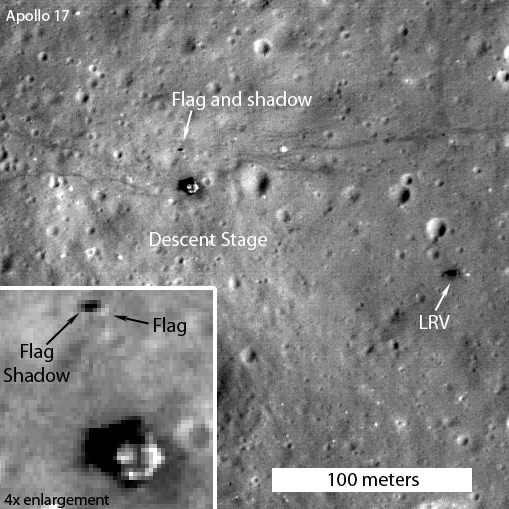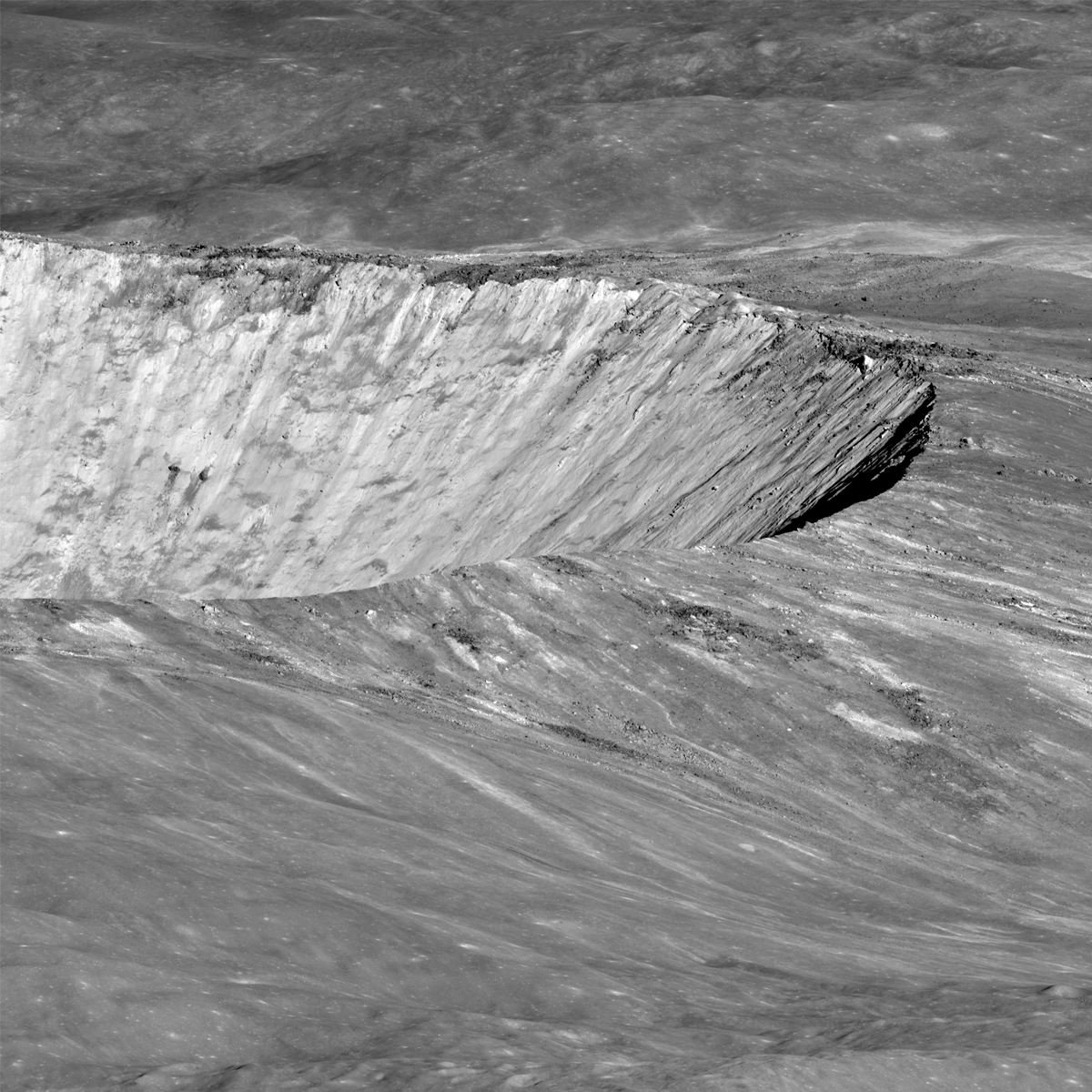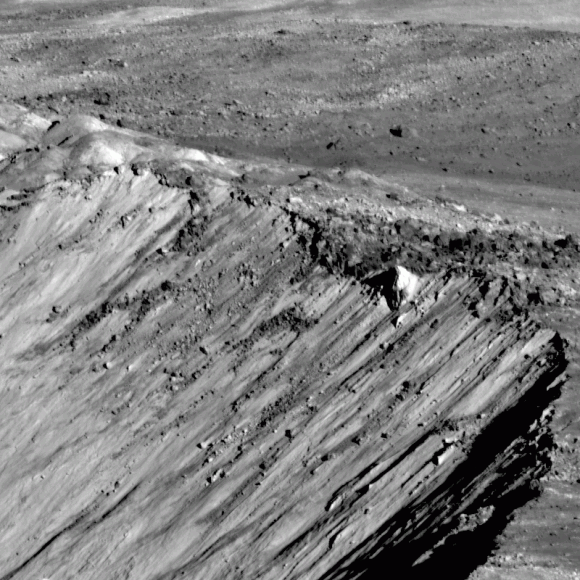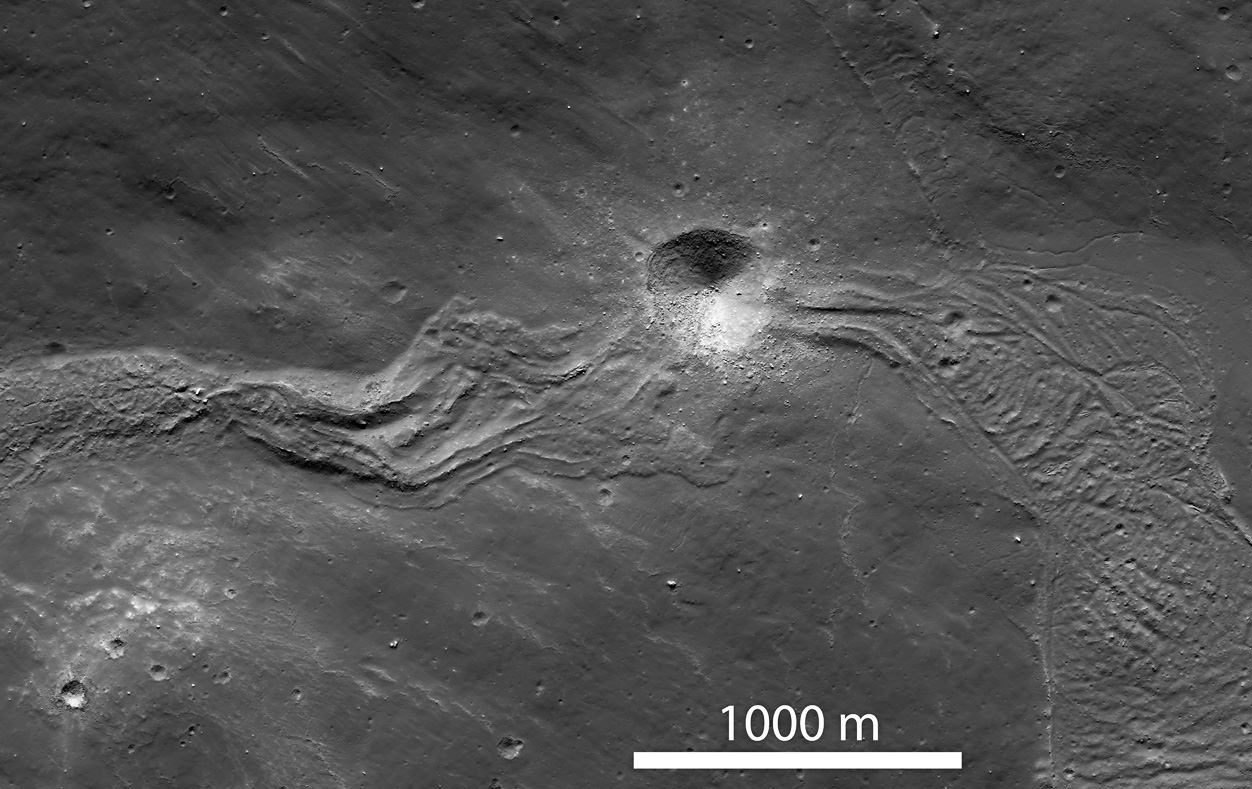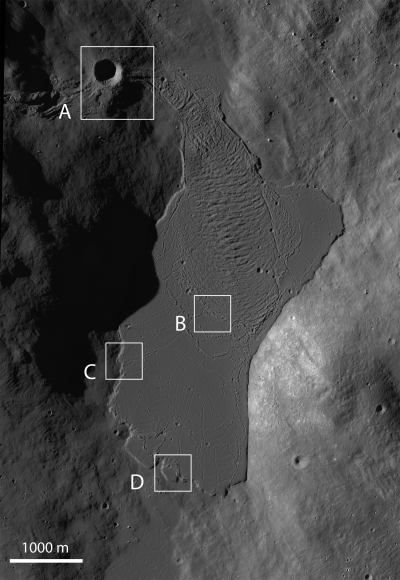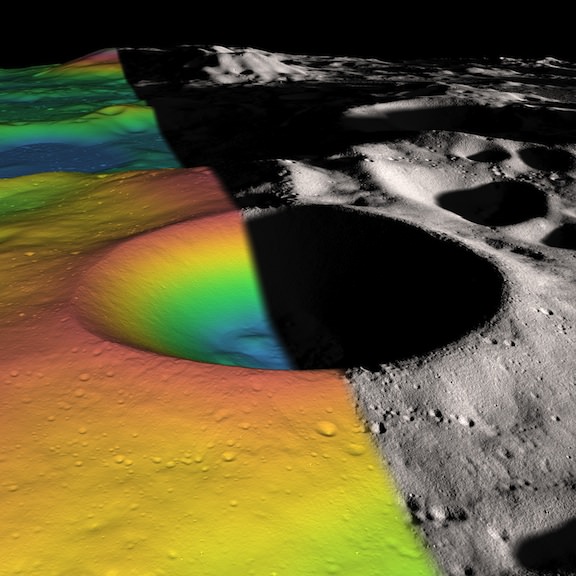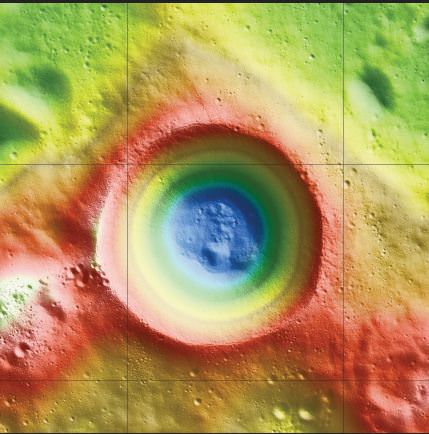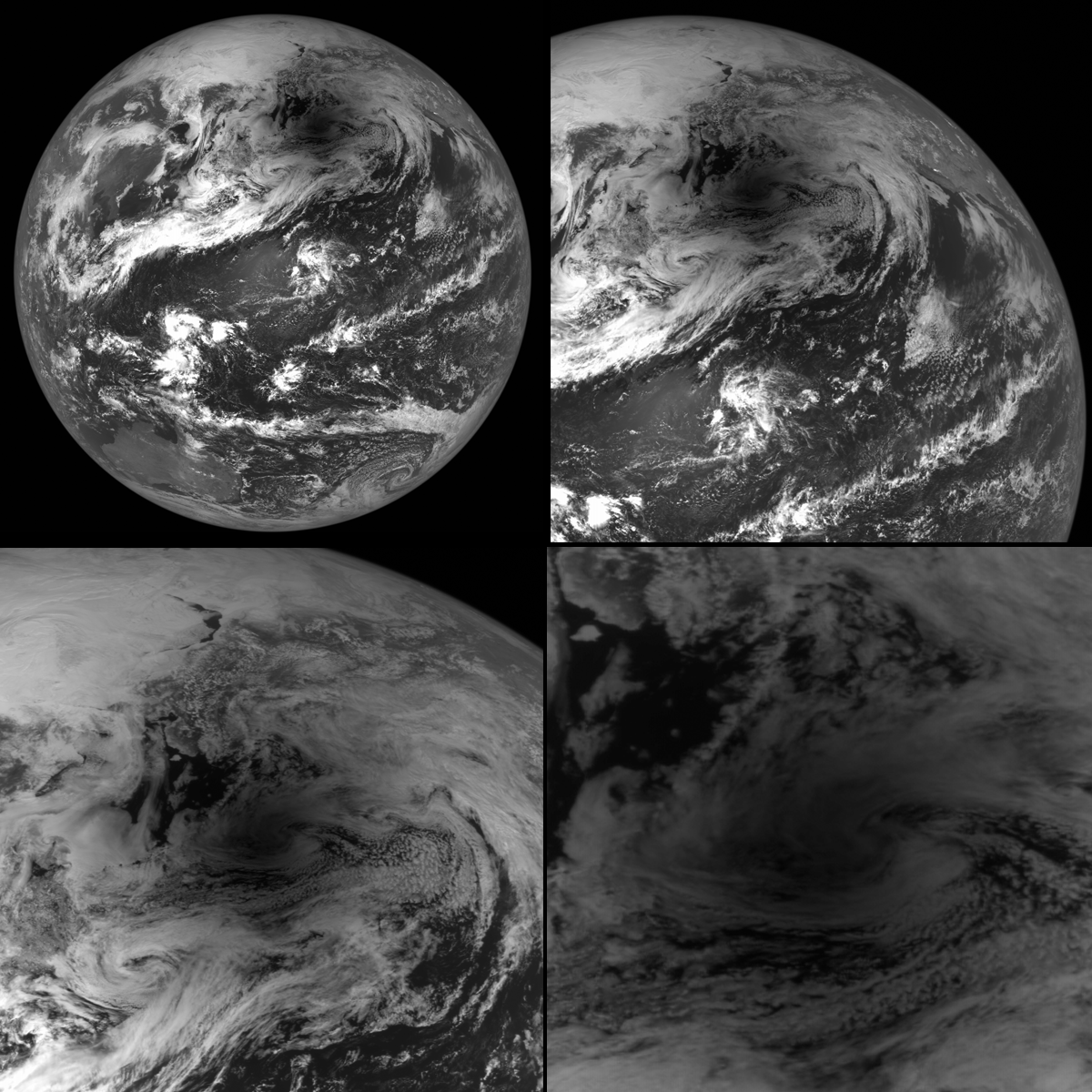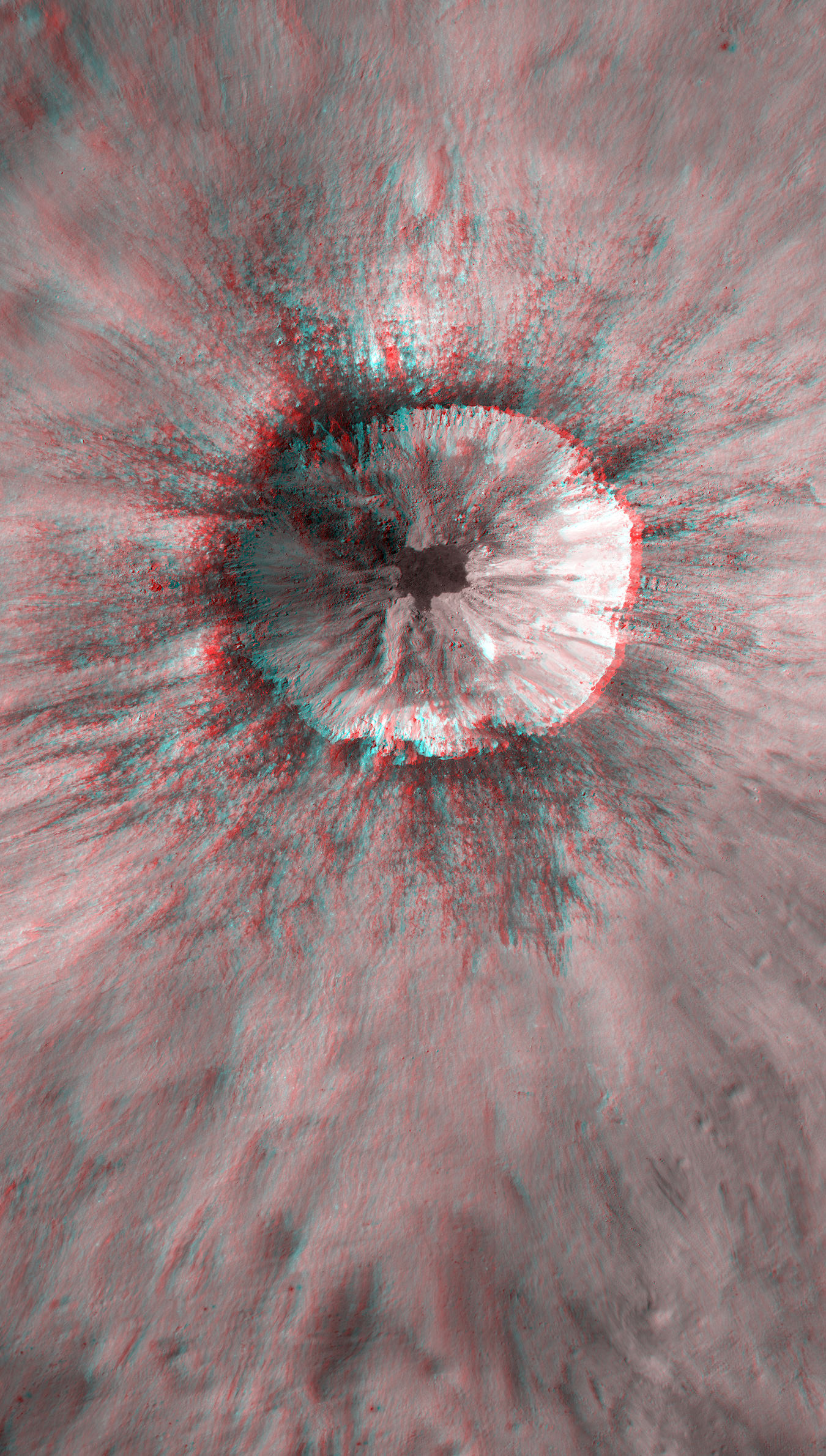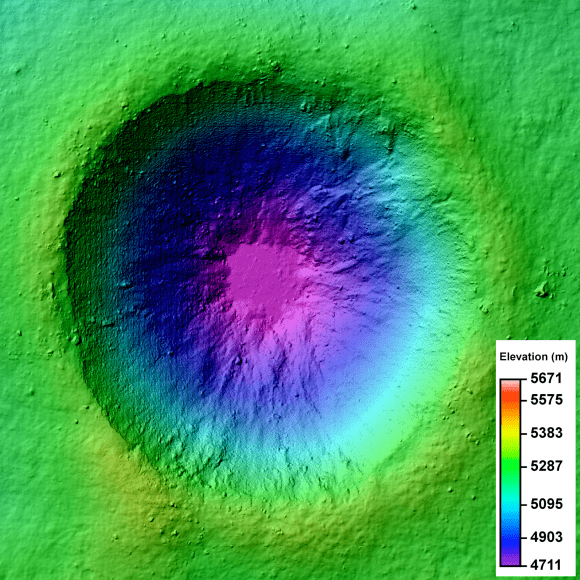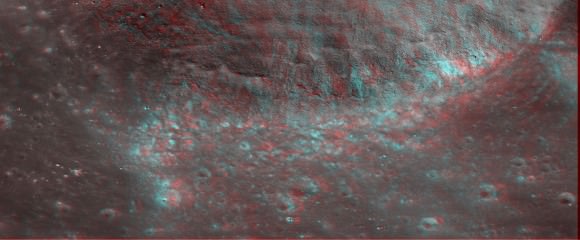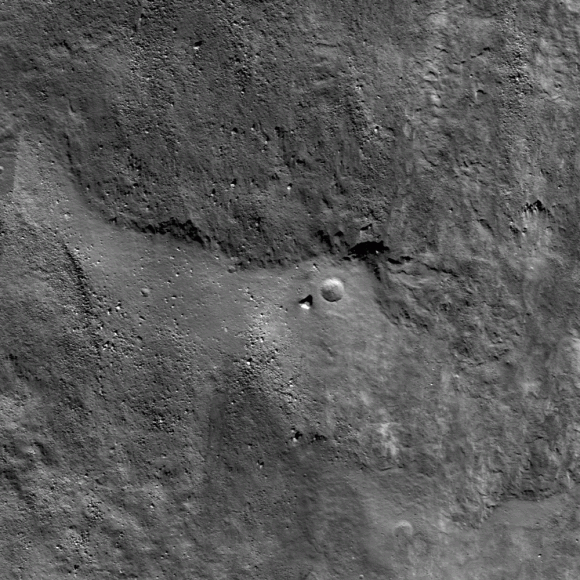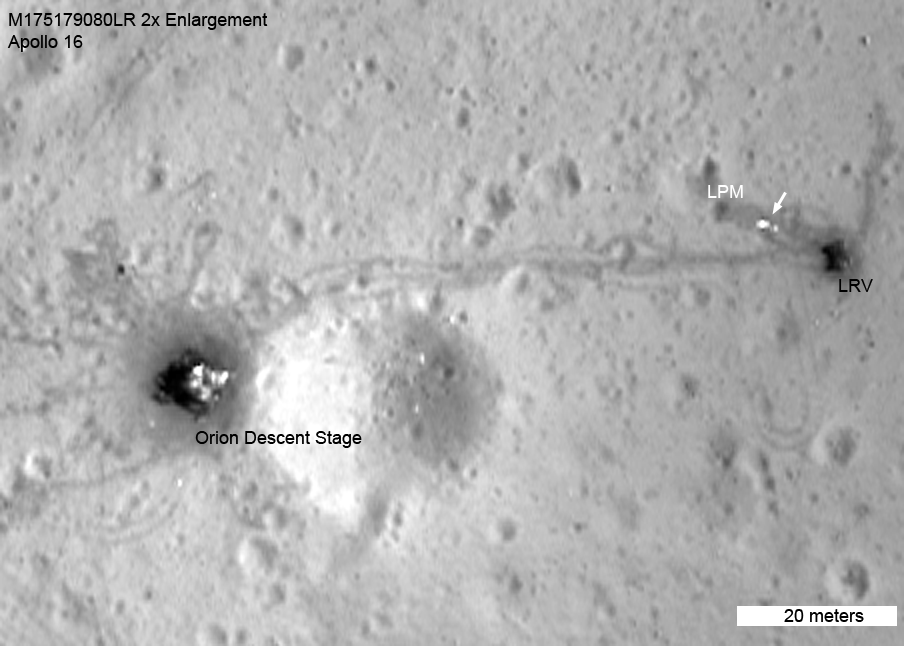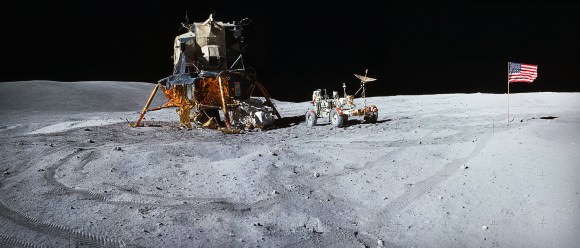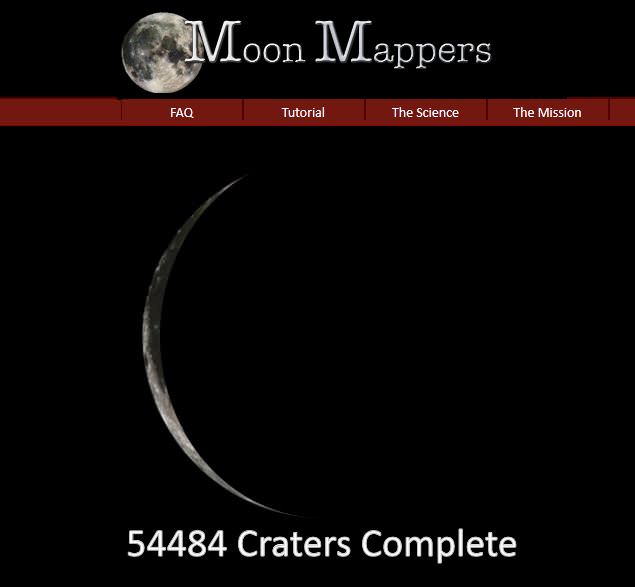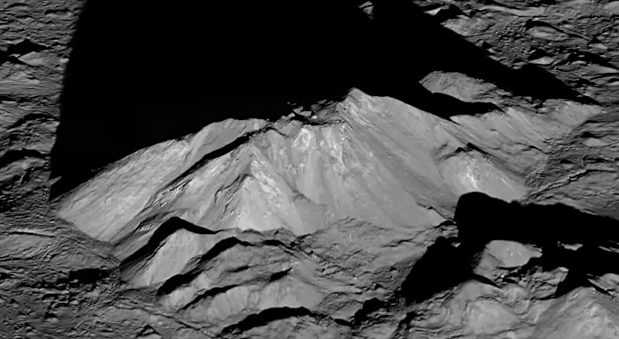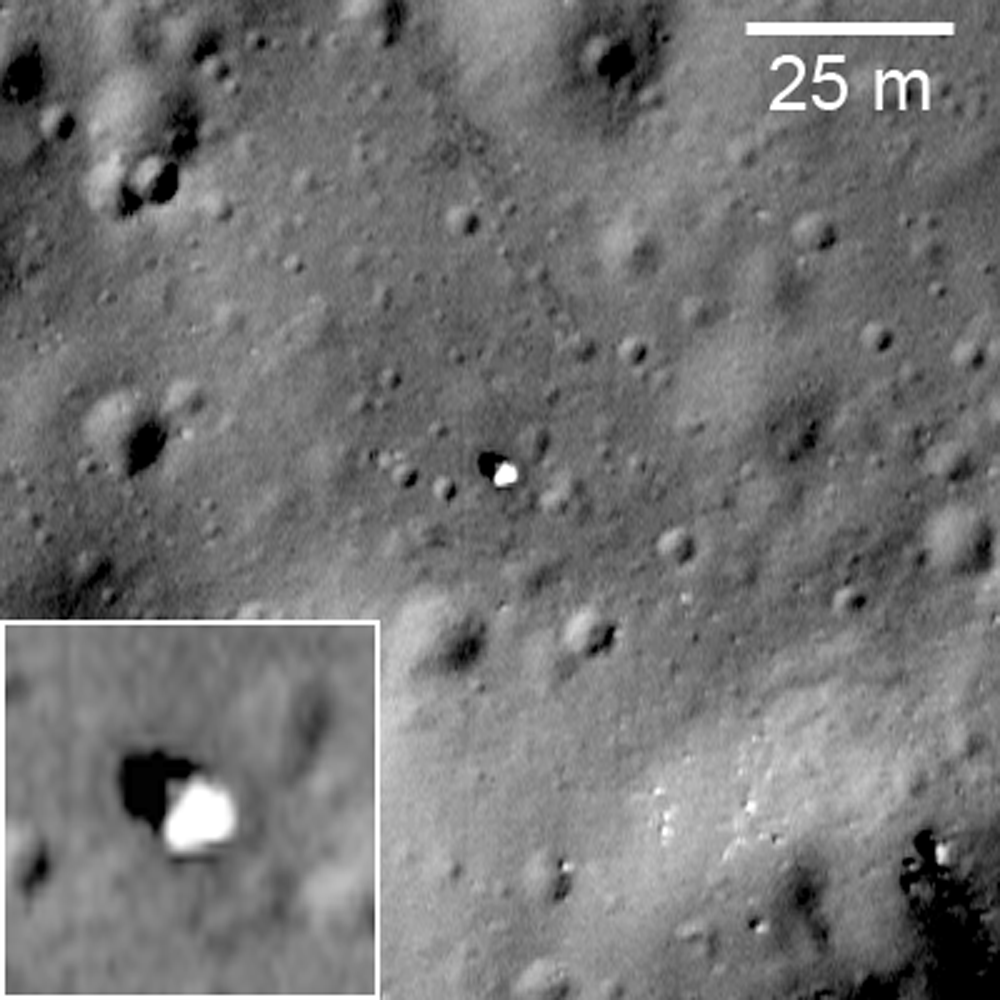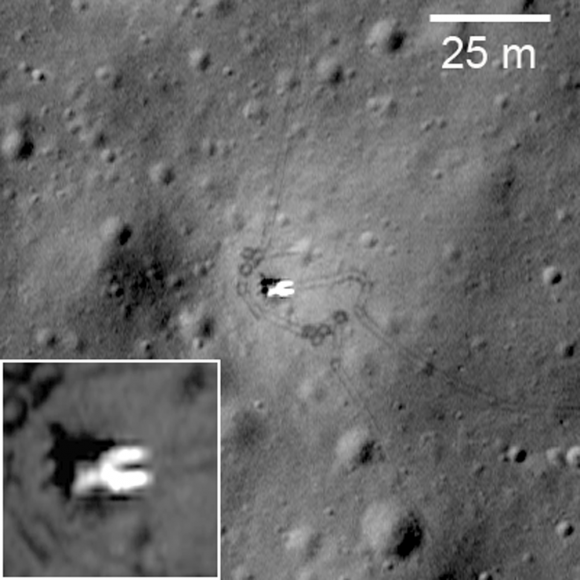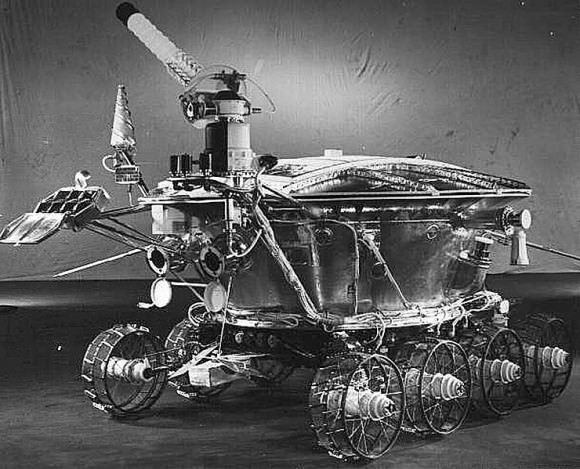Caption: LROC image showing the illuminated side of the still standing American flag to be captured at the Apollo 17 landing site. Credit: NASA/GSFC/Arizona State University.
Mark Robinson, Principal Investigator of the Lunar Reconnaisance Orbiter Camera (LROC) says the most often-asked questions he gets about the images LRO has taken of the Moon are about pictures of the Apollo landing sites and what is visible. Especially, Robinson said, people want to know if the flags are still standing.
Previously, Robinson has said that while the flag poles are likely still standing, he didn’t think the flags themselves survived the harsh radiation of the lunar surface environment. But new images and video show that at some of the landing sites – Apollo 12, Apollo 16, and Apollo 17 – the flags must still be intact, because they are creating shadows on the surface.
“Personally I was a bit surprised that the flags survived the harsh ultraviolet light and temperatures of the lunar surface, but they did,” Robinson wrote on the LROC website. “What they look like is another question (badly faded?).”
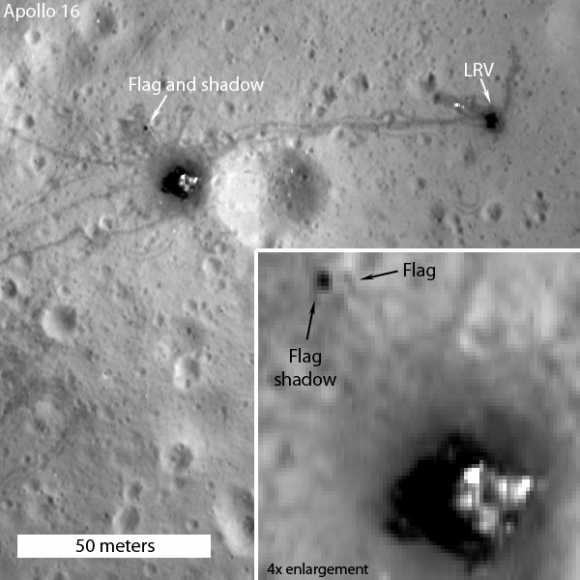
Caption: The flag was captured in this image of the Apollo 16 site with the spacecraft slewed 15° towards the Sun; the shadowed side of the flag is seen by LROC. Credit: NASA/GSFC/Arizona State University.
James Fincannon, a NASA engineer from Glenn Research Center, combined LROC images of each Apollo site taken at roughly the same orientation but with different Sun angles to show the travel of shadows.
“Combined with knowledge of the Apollo site maps which show where the flag was erected relative to the Lander, long shadows cast by the flags at the three sites show that the these flags are still “flying”, held aloft by the poles,” Fincannon wrote.
And so, from the LROC images it is now certain that the American flags are still standing and casting shadows at all of the sites, except Apollo 11. Astronaut Buzz Aldrin reported that the flag was blown over by the exhaust from the ascent engine during liftoff of Apollo 11, and Robinson said that from the images of the Apollo 11 landing site, it looks like he was correct.

Caption: Enlargement of area surrounding Apollo 11 landing site. Credit: NASA/GSFC/Arizona State University
Robinson added that the most convincing way to see that the flags are still there, is to view a time series of LROC images taken at different times of day, and watch the shadow circle the flag (see movie below; the flag is just above the LM descent stage).
Read Fincannon’s story of his research on the flags.
Source: LROC website.

